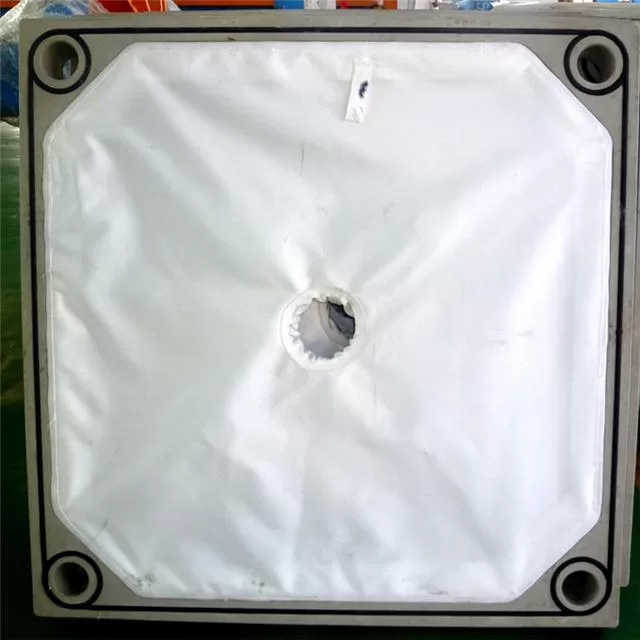A filter press cloth is a specialized material used in dewatering applications. Dewatering involves separating liquids from solids using a pressure filter, which forces the liquid through the cloth while retaining solid particles.
Filter press cloths are installed in series within a filter press machine. During operation, liquid and slurry are fed into the machine, where they are compressed. This pressure squeezes the material through the cloth, effectively filtering out the solids and separating the two states.

What Are Filter Press Cloths Used For?
Filter press cloths are designed specifically for liquid-solid separation. Each cloth is custom-made to fit the dimensions of the filter press machine plates, typically measured in meters.
The cloth’s weave determines the size of particles it can retain, referred to as the micron rating. Filter cloth micron ratings typically range from 5 to 25 microns, depending on the application requirements.
What Materials Are Used to Make Filter Press Cloths?
Filter press cloths are made from durable materials designed to withstand high temperatures and extreme conditions. Common materials include:
- Polyester
- Polypropylene
- Cotton
- Nylon
- Felt
These materials are available in mono-filament and multi-filament configurations:
- Mono-filament Cloth:
- Single-line weave for excellent cake release and durability.
- Lower particle retention compared to multi-filament cloth.
- Stronger and more resistant to wear.
- Multi-filament Cloth:
- Contains grouped fibers in each thread for better micron retention.
- Ideal for applications requiring finer filtration.
Gasketed vs. Non-Gasketed Filter Cloths
Gasketed Filter Plates
Gasketed filter plates, also known as recessed chamber plates, are the most commonly used option for leak-proof filtration. The associated filter cloths are hexagonal and include sewn cords to capture even the smallest particles.
Non-Gasketed Filter Plates
Non-gasketed plates use lighter filter cloths that are easier to install. However, these cloths may experience minor leakage during operation.
Weave Patterns
The weave of a filter press cloth affects its performance. Here are five common types:

- Leno Weave
- Constructed with interlocked warp threads and filling threads.
- Lightweight and ideal for light cake release applications.
- Twill Weave
- Standard weaving pattern with moderate binding strength.
- Suitable for heavier cake releases.
- Plain Weave
- Simplest and most robust weave type.
- Offers high particle retention and moderate cake release properties.
- Basket Weave
- A variation of the plain weave with a looser structure.
- Recommended for basic filtration needs due to its reduced stability.
- Satin Weave
- Complex weave with excellent cake release properties.
- Ideal for applications requiring superior cake removal.
Cleaning a Filter Press Cloth

Proper cleaning extends the lifespan of filter press cloths and maintains their efficiency.
Cleaning Gasketed Filter Cloths
Use an acid-washing method for deep cleaning. Follow all safety guidelines to ensure effective and safe results.
Cleaning Non-Gasketed Filter Cloths
The cold water spray method is recommended. Wash the cloth using high-pressure cold water (800–1200 PSI) to flush out particles embedded in the material.
Working with a Filter Press Cloth Manufacturer

When choosing a filter press cloth manufacturer, consider the following steps:
- Understand Your Needs: Identify your filtration requirements, including machine specifications, particle retention, and cake release.
- Consult an Expert: Collaborate with manufacturers who offer tailored solutions for your application.
- Seek Quality: Partner with a manufacturer that prioritizes durability, efficiency, and customization to meet your needs.
By selecting the right manufacturer, you ensure a long-lasting and effective solution for your filtration processes.
